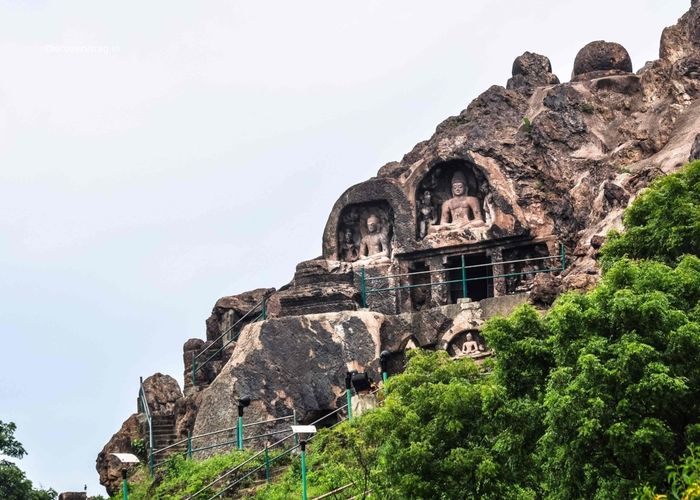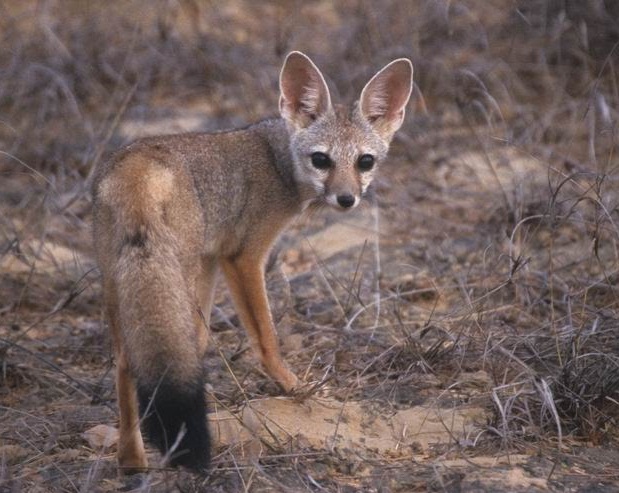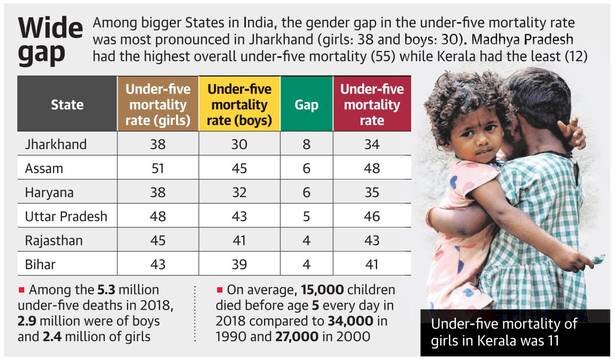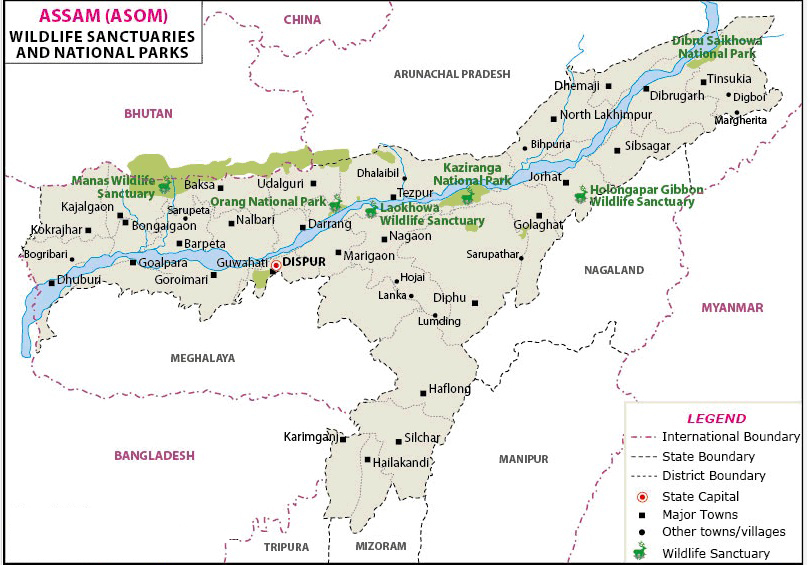Indian Polity
Right to Private Property
Why in News
The Supreme Court has recently held that a citizen’s right to own private property is a human right.
- The case was of an 80-year-old woman whose 3.34 hectare land was forcibly taken by the Himachal Pradesh Government in 1967, for constructing a road.
- The Court used its extraordinary jurisdiction under Article 136 and Article 142 of the Constitution to direct the government to pay the woman compensation of 1 crore rupees.
Key Points
- A citizen’s right to own private property is a human right. The state cannot take possession of it without following due procedure and authority of law.
- The Bench referred to an earlier verdict in State of Haryana v. Mukesh Kumar case (2011) wherein it was held that the right to property is not only a constitutional or statutory right, but also a human right.
- Doctrine of Adverse Possession: The state cannot trespass into the private property of a citizen and then claim ownership of the land in the name of ‘adverse possession.
- Grabbing private land and then claiming it as its own makes the state an encroacher.
- In 1967, when the government forcibly took over the land, ‘right to private property was still a fundamental right’ under Article 31 of the Constitution.
- Right to Property ceased to be a fundamental right with the 44th Constitution Amendment in 1978.
- It was made a Constitutional right under Article 300A. Article 300A requires the state to follow due procedure and authority of law to deprive a person of his or her private property.
Doctrine of Adverse Possession
- It is a legal doctrine that allows a person who possesses or resides on someone else's land for an extended period of time to claim legal title to that land.
- In India, a person who is not the original owner of a property becomes the owner because of the fact that he has been in possession of the property for a minimum of 12-years, within which the real owner did not seek legal recourse to oust him.
Article 142
- It provides discretionary power to the Supreme Court as it states that the Supreme Court in the exercise of its jurisdiction may pass such decree or make such order as is necessary for doing complete justice in any cause or matter pending before it.
Article 136 (Special Leave Petition)
- It allows the Supreme Court to hear, at its discretion, an appeal against any order from any court or tribunal in the territory of India. However, this does not apply to any judgment, determination, sentence or order passed or made by any court or tribunal constituted by or under any law relating to the Armed Forces.
Social Justice
Under-5 Girls Face High Mortality in India: UNICEF
Why in News
Recently, the United Nations Children's Fund (UNICEF) released the ‘Levels and Trends in Child Mortality’ report. According to it, unlike global trends, India’s under-5 mortality of girls exceeded that of boys in 2018.
- On average, boys are expected to have a higher probability of dying before reaching age-5 than girls.
- The global report states that fewer countries showed gender disparities in child mortality in 2018.
Key Points
- Countries primarily located in Southern Asia and Western Asia have a significantly higher risk of girls dying before age 5.
- According to the report, half of all under-5 deaths in 2018 occurred in five countries: India, Nigeria, Pakistan, the Democratic Republic of the Congo and Ethiopia.
- India and Nigeria alone account for about a third.
- Despite the tremendous progress in child survival made over the past two decades, one child or young adolescent died every five seconds in 2018.
- The burden of child mortality is determined both by the mortality rate (the proportion of children who die) and by the estimated population of any given State (total number of annual births).
- Current trends predict that close to 10 million 5 to 14 year olds and 52 million children under 5 years of age, will die between 2019 and 2030. Almost half of these under-5 deaths will be newborns.
Indian Context
- The majority of child mortality cases in India are attributable to deaths during the neonatal period.
- The major causes of neonatal mortality are preterm birth, intrapartum related events and neonatal infection.
- In the post-neonatal period, the major direct causes of death are diarrhoea and pneumonia.
- India’s neonatal mortality rate is 23 per 1,000 live births.
- According to India’s 2017 Sample Registration System (SRS), the States with the highest burden of neonatal mortality are Madhya Pradesh, Odisha and Uttar Pradesh, with 32, 33 and 30 neonatal deaths per 1,000 live births, respectively.
- Jharkhand, Bihar and Uttarakhand showed the largest gender gaps in under-5 mortality.
- Uttar Pradesh is the state with the highest number of estimated newborn deaths in India, both because of the high neonatal mortality rate and because of the large number of births that occur every year in the State.
Steps to be Taken
- It is urgently required to further accelerate progress in preventing child deaths by adopting proactive measures.
- Deaths of newborns can be prevented by reaching high coverage of quality antenatal care, skilled care at birth, postnatal care for mother and baby, and care of small and sick newborns.
Indian Heritage & Culture
INTACH Efforts to Protect Buddhist Site
Why in News
The Indian National Trust for Art and Cultural Heritage (INTACH), heritage lovers and officials have almost stopped the stone-pelting ritual at Bojjannakonda, a famous Buddhist site at Sankaram, near Visakhapatnam, Andhra Pradesh.
- On the Kanuma day during Sankranti, the villagers used to pelt stones at a belly-shaped object, believing it to be a part of a demon.
Kanuma Day
- It is an important day during the Pongal and Sankranti festivals, which are both ancient harvest festivals that take place in mid-January, celebrating the movement of the sun reversing, marking the start of the end of winter.
- In Andhra Pradesh, the Kanuma festival is celebrated on the third day of the four-day Sankranti festival.
- It is an important festival of Telugu people and is dedicated to cattle and other animals that are an important part of the rural economy in Andhra Pradesh.
Key Points
- The main stupa is carved out of rock and then covered with bricks, with a number of images of the Buddha sculpted on the rock face all over the hill.
- Bojjannakonda and Lingalametta are the twin Buddhist monasteries dating back to the 3rd century BC.
- At Lingalametta, there are hundreds of rock-cut monolithic stupas in rows.
- These sites have seen three forms of Buddhism-
- Theravada period: when Lord Buddha was considered a teacher.
- Mahayana: where Buddhism was more devotional.
- Vajrayana: where Buddhist tradition was more practised as Tantra and esoteric form.
- The name Sankaram is derived from the term, ‘Sangharama’.
- It is famous for votive stupas, rock-cut caves, brick-built structural edifices, early historic pottery and Satavahana coins that date back to the 1st century AD.
- Visakhapatnam is famous for Buddhist sites at Thotlakonda, Appikonda, and Bavikonda too.
Indian National Trust for Art and Cultural Heritage
- It is a non-profit charitable organisation registered under the Societies' Registration Act, 1860.
- It was founded in 1984 in New Delhi with the vision to spearhead heritage awareness and conservation in India.
- It has pioneered the conservation and preservation of not just our natural and built heritage but intangible heritage as well.
- In 2007, the United Nations awarded INTACH a special consultative status with the United Nations Economic and Social Council.
Biodiversity & Environment
Wetland Bird Census at Kaziranga National Park
Why in News
The second wetland bird count was conducted in the Kaziranga National Park from 9th- 10th January 2020.
- The first wetland bird survey was conducted in 2018.
Key Findings
- Number of Birds
- A total of 19,225 birds belonging to 96 species under 80 families was reported which is significantly higher than that of 2018.
- Having 96 species of wetland birds is one of the highest for wildlife reserves in India.
- Range wise Distribution
- The survey covered four ranges of the park — Agoratoli, Bagori, Kohora and Burapahar.
- More than half the birds (9,924) and 85 of the 96 species were recorded in Agoratoli Range. This was because Sohola, the largest of Kaziranga's 92 perennial wetlands, is in this range.
Kaziranga National Park
- Location: It is located in the State of Assam and covers 42,996 ha. It is the single largest undisturbed and representative area in the Brahmaputra Valley floodplain.
- Legal Status
- It was declared as a National Park in 1974.
- It has been declared a tiger reserve since 2007. It has a total tiger reserve area of 1,030 sq km with a core area of 430 sq. km.
- International Status
- It was declared a UNESCO World Heritage Site in 1985.
- It is recognized as an Important Bird Area by BirdLife International.
- Important Species Found
- It is the home of the world's most one-horned rhinos.
- Much of the focus of conservation efforts in Kaziranga are focused on the 'big four' species— rhino, elephant, Royal Bengal tiger and Asiatic water buffalo.
- The 2018 census had yielded 2,413 rhinos and approximately 1,100 elephants.
- As per the figures of tiger census conducted in 2014, Kaziranga had an estimated 103 tigers, the third highest population in India after Jim Corbett National Park (215) in Uttarakhand and Bandipur National Park (120) in Karnataka.
- Kaziranga is also home to 9 of the 14 species of primates found in the Indian subcontinent.
- Rivers and Highways
- The National Highway 37 passes through the park area.
- The park also has more than 250 seasonal water bodies, besides the Diphlu River running through it.
Important Facts For Prelims
A(H9N2) Virus
Why in News
Avian influenza A(H9N2) virus infection has been reported in a 17-month-old boy in Maharashtra.
- This is the country’s first human case of infection with H9N2 virus. H9N2 viruses have been observed in poultry in India several times.
Key Points
- About H9N2 Virus
- H9N2 is a subtype of influenza A virus, which causes human influenza as well as bird flu.
- The H9N2 subtype was isolated for the first time in Wisconsin, US in 1966 from turkey flocks.
- H9N2 viruses are found worldwide in wild birds and are endemic in poultry in many areas.
- Cases of Human Infection
- H9N2 virus infections in humans are rare, but likely under-reported due to typically mild symptoms of the infections.
- Cases of human infection have been observed in Hong Kong, China, Bangladesh, Pakistan, and Egypt. The first case globally was reported from Hong Kong in 1998.
- Emerging Threat
- H9N2 viruses could potentially play a major role in the emergence of the next influenza pandemic.
- According to the World Health Organization (WHO), with avian influenza viruses circulating in poultry, there is a risk for sporadic infection and small clusters of human cases due to exposure to infected poultry or contaminated environments.
Important Facts For Prelims
National Youth Day 2020
Why in News
National Youth Day (NYD) is observed on Swami Vivekananda's birth anniversary on January 12 every year.
Key Points
- To honour Swami Vivekananda's contributions to the country, the government in the year 1984, declared his birthday as National Youth Day.
- The main objective of NYD is to promote rational thinking among the youth. Youth is expected to rise to the values, principles and beliefs that Vivekananda lived by.
- National Youth Festival (NYF) 2020: On this occasion, the Ministry of Youth Affairs and Sports and Uttar Pradesh government also jointly organized 23rd NYF 2020.
- The Government has been organizing National Youth Festival (NYF) since 1995.
- The objective of NYF is to provide an arena where youth can interact and exchange their social and cultural uniqueness. This blend of diverse socio-cultural milieu proves belief in ‘Ek Bharat Shrestha Bharat’.
- The theme of the NYF 2020 is ‘FIT YOUTH FIT INDIA’.
Swami Vivekananda (1863-1902)
- He was born as Narendranath Datta on January 12, 1863.
- Introduced the world to the Indian philosophies of Vedanta and Yoga.
- He was the chief disciple of the 19th-century mystic Ramakrishna Paramhansa.
- Laid the greatest emphasis on education for the regeneration of our motherland. He advocated a man-making character-building education.
- Established the Ramakrishna Mission in 1897. It is an organization which works in the area of value-based education, culture, health, women's empowerment, youth and tribal welfare and relief and rehabilitation.
- He died at Belur Math in 1902. Belur Math, located in West Bengal, is the headquarters of Ramakrishna Math & Ramakrishna Mission.
Ramakrishna Paramhansa
- He was born as Gadadhar Chattopadhyay in 1836 in West Bengal.
- He was one of the leading Hindu spiritual leaders in the 19th century.
- He believed that the realization of the existence of God is the supreme goal of all living beings.
Important Facts For Prelims
Bengal Fox
Why in News
Forest Department officials in Salem, Tamill Nadu are gearing up to prevent an unusual jallikattu, one that uses foxes (Bengal Fox) instead of bulls at the Kaanum Pongal, the fourth and final day of the harvest festival.
- Foxes or Vanga Nari in Tamil are used in the festival because villagers believe it will bring bountiful rain and good fortune.
Key Points
- The foxes are muzzled and their hind legs tied with rope. After special rituals, they are chased through the streets, like bulls in the more conventional jallikattu. After the event, the animals are released into the forest.
- Despite a ban, the event has been organised for decades now.
Bengal Fox
- It is also known as the Indian fox, is a species of Asian foxes endemic to the Indian subcontinent.
- This is a medium-sized fox with an elongated muzzle with black hair in small patches on the upper part of the muzzle. Its large, bushy, black-tipped tail is its most prominent feature, accounting for as much as 60% of the length of its body.
- These are protected under Part 1 of Schedule II of the Wildlife Protection Act, 1972, and hunting or capturing them is prohibited.
- IUCN Red List- Least Concerned.
Important Facts For Prelims
Ghodahada Reservoir
Why in News?
The population of Mugger Crocodile is on the rise in Odisha’s Ghodahada reservoir.
Key Points
- As per the annual crocodile census conducted in the Ghodahada reservoir, the number of mature mugger crocodiles in Ghodahada reservoir and its adjoining area has increased.
- The reservoir is located close to the Lakhari Valley Sanctuary and is a part of the Eastern Ghats.
- The reservoir is fed by Ghodahada river which is a tributary of the Rushikulya.
Mugger Crocodile (Crocodylus palustris)
- It is one of the three crocodile species found in Odisha, the others being gharial in Satkosia and Saltwater crocodile in Bhitarkanika.
- The mugger is an egg-laying and hole-nesting species.
- It is mainly restricted to the Indian subcontinent where it may be found in a number of freshwater habitat types including rivers, lakes and marshes.
- However, it can even be found in coastal saltwater lagoons and estuaries.
- It is already extinct in Bhutan and Myanmar.
- Principal threats: Habitat destruction, fragmentation, and transformation, fishing activities and use of crocodile parts for medicinal purposes.
- IUCN status: Vulnerable
- It is protected under Schedule I of the Wildlife Protection Act, 1972. Schedule I and part II of Schedule II of the Wildlife Protection Act, 1972 provide the highest degrees of protection to listed species.
- It is also listed under CITES Appendix I.
Lakhari Valley Sanctuary
- It was established in the year 1985. It is marked by the tropical climate and receives a huge amount of rainfall every year due to its proximity to the Bay of Bengal.
- The sanctuary is full of rich tropical forest, valleys, hills, water sources etc.
- It is one of the elephant populated sanctuaries in India.
Important Facts For Prelims
Kolkata Port Trust
- On the occasion of 150th anniversary celebration of Kolkata Port Trust, it has been renamed after Dr. Shyama Prasad Mukherjee.
- The Port has two distinct dock systems - Kolkata Docks at Kolkata and a deep water dock at Haldia Dock Complex, Haldia.
- History of Kolkata Port Trust
- It is the oldest operating port in India, and was constructed by the British East India Company.
- The Port which was once considered the most important port in the country still remains the premier port which has been rightly called the gateway to Eastern India.
- It is the guiding factor to trade and commerce of vast hinterland comprising the entire Eastern India including Bihar and Eastern Uttar Pradesh and the two land-locked Himalayan Kingdoms of Nepal and Bhutan.
- After independence, the port's importance decreased because of factors including the Partition of India (1947), reduction in size of the port hinterland, and economic stagnation in eastern India.
- Governance: It is an autonomous body under the ministry of shipping, Government of India administered through Major Port Trusts Act, 1963.
- Location: Kolkata Port is the only riverine Major Port in India, situated 232 kms up-stream from the Sandheads. Its navigational channel is one of the longest in the world.
Major Ports
- India has 13 major ports viz. Kolkata Port, Paradip Port, New Mangalore Port, Cochin Port, Jawaharlal Nehru Port, Mumbai Port, Kandla Port, Visakhapatnam Port, Chennai Port, Tuticorin port, Ennore Port, Mormugao Port and Port Blair Port.
Important Facts For Prelims
Second Tallest Statue of Gautam Buddha
- The world's second tallest statue of Gautam Buddha is proposed to be built in Dev Ni Mori, Sabarkantha district, Gujarat.
- The proposed statue (108m) would be second in the world after the Spring Temple in China (153 meters).
- Relevance of Dev Ni Mori
- Dev Ni Mori was excavated by the state archaeology department in 1953.
- The remains of a Buddhist monastery belonging to 3rd-4th century AD have been unearthed from Devni Mori.
- The most important discovery from the site however was a 1,700 year old casket which has bodily relics of Buddha.
- The inscription clearly mentions that the casket contains bodily relics of Buddha.
- The presence of a stupa and monastery has reconfirmed a strong presence of Buddhists in Vadnagar during the early centuries of Christian era.
- The recent excavations have brought to light a Buddhist Monastery belonging to the 2nd-7th century AD, within the fortified area of Vadnagar, Gujarat.
- The monastery had two votive stupas and an open central courtyard around which initially nine cells were constructed. The arrangement of cells around the central courtyard creates a swastika-like pattern.
Note
- The Statue of Unity is the world's tallest statue at 182 metres (597 ft) located in Narmada Valley Kevadiya, Narmada district, Gujarat.







-min.jpg)